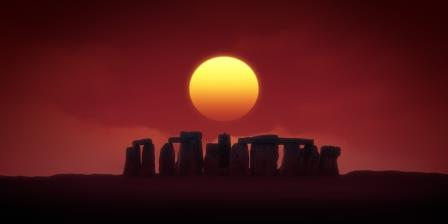Psychic Blog
Summer Solstice
6 Jun 2024

Observance of the Solstices dates back several millennia; there are many sites across the world that have precise soar alignments. Callanish in Scotland is made up of standing stones where the sun rises and sets at Solstice. In New Mexico there is Fajada Butte in Chaco Canyon which makes use of directed sunbeams that highlights carvings on the rock walls during equinoxes. And of course there is the sacred site of Stonehenge in Wiltshire.
Stonehenge
The first monument at Stonehenge (of around 3,000 BC) consisted of a circular ditch and bank about 100 meters in diameter). Possibly with a ring of 56 wooden posts, the pits for which are now called Aubrey Holes, after the 17th century Wiltshire antiquarian John Aubrey.
Some 4-500 years later the first stones arrived: these were bluestones, transported over 240 km (150 miles) from the Preseli Hills in Pembrokeshire, West Wales. Paired bluestones were erected in an arc to the north east of the centre of the monument. Shortly afterwards this was dismantled, and replaced by an arrangement of stones which included the much larger super-hard ‘sarsen’ stones from the nearby Marlborough Downs.
The outer circle was composed of 30 sarsen uprights with a similar number of lintels. This enclosed five sarsen trilithons (pairs of uprights with a lintel across each), arranged in a horseshoe shape, with the open end towards midsummer sunrise.
Bluestones, which clearly had a special significance for the builders, were re-erected in a circle between the outer sarsen circle and horseshoe, and inside the horseshoe. Some bluestones were later removed to leave the final setting, the remains of which can be seen today.
Summer Solstice is sometimes called Litha or Midsummer
Summer Solstice is a major celestial event which results in the longest day and shortest night of the year. In 2024 in the UK it takes place on Monday 20th June. Modern Druids still hold Midsummer rites at Stonehenge; festivities are believed to have taken place at the site from the 13th century. Great spiritual significance is attached to the date; Christians place the feast of John the Baptist (St John’s Eve) two days after Midsummer. Many believe that it is a time to celebrate growth and life, but also to recognise the balance needed in ones life and the world in general, and to acknowledge the shifting of seasons, as the sun begins to decline again towards winter.
TweetBrowse Our Blog
Categories
- Blog Home
- Angels
- Astrology
- Book Reviews
- Celebrity
- Crystals
- General
- Love
- Mediumship
- Paranormal
- Readers
- Seasons
- Special-Offer
- Spirituality
- Superstitions
- The Psychic Gift
- Wellbeing